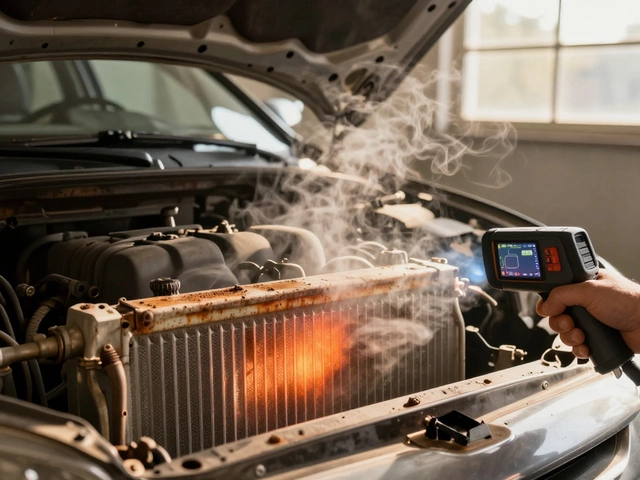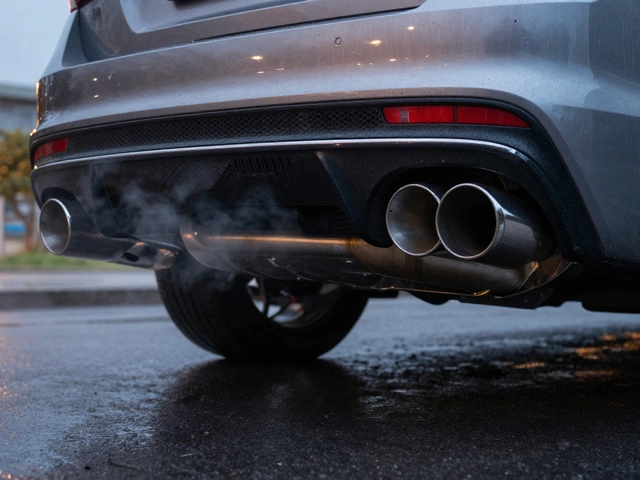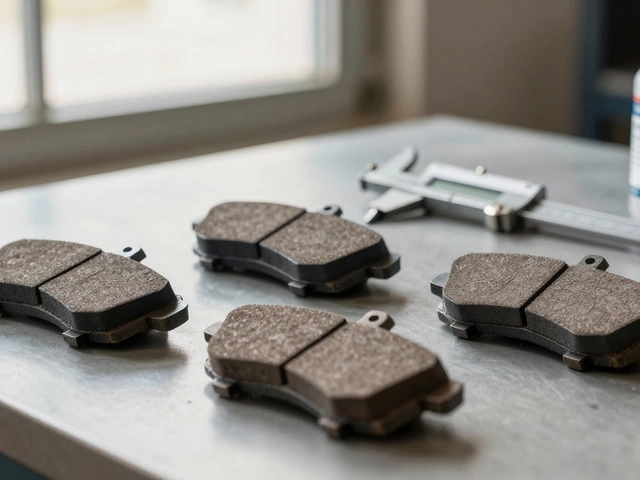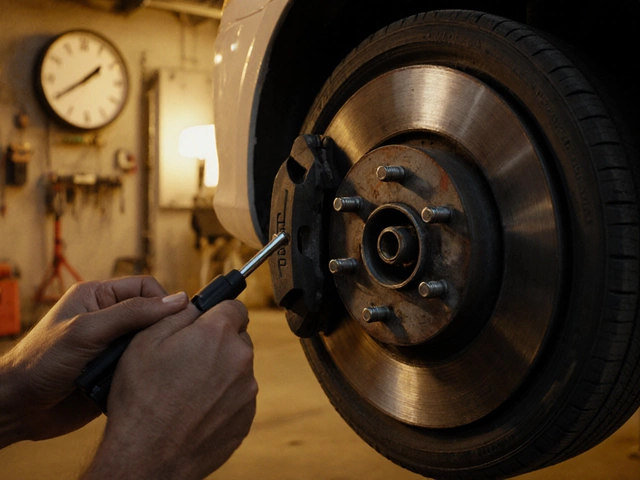Driving with bad shocks isn’t just uncomfortable-it’s dangerous. You might not notice right away, but worn shocks don’t just make your ride bumpy. They affect how your car stops, turns, and handles bumps, especially on New Zealand’s winding roads or wet highways. If you’ve been hearing clunks over speed bumps or feeling your car sway after a turn, it’s not just noise-it’s a warning.
What Bad Shocks Actually Do to Your Car
Shocks don’t hold up your car-that’s what springs do. Shocks control the movement of the springs. When they wear out, your tires lose contact with the road more often. This isn’t theoretical. A 2023 study by the New Zealand Transport Agency found that vehicles with worn suspension components took up to 18% longer to stop in wet conditions compared to those with healthy shocks.
Bad shocks also cause uneven tire wear. You might think your tires are just old, but if the tread is worn more on the inside or outside edges, it’s likely because your shocks aren’t keeping the tire flat on the road. That means you’re replacing tires more often than you should.
And it’s not just tires. Worn shocks put extra stress on your steering components, ball joints, and even your brake system. Over time, this leads to expensive repairs you could’ve avoided with a $200 shock replacement.
How Long Can You Really Drive With Them?
There’s no magic number like “1,000 km” or “six months.” It depends on how bad they are and how you drive. But here’s the reality: if your shocks are visibly leaking fluid, or if your car bounces more than once after pressing down on the hood, you’re already in the danger zone.
Most mechanics agree: once shocks are 70% worn, you’re driving on borrowed time. That usually happens around 80,000 to 100,000 km, but it can be as low as 50,000 km if you drive on rough roads often-like rural routes in Waikato or the West Coast.
Here’s a rough timeline based on condition:
- Early wear (50,000-70,000 km): Slight nose dive when braking, more road noise. Still drivable, but start planning for replacement.
- Moderate wear (70,000-90,000 km): Noticeable bouncing, steering feels loose, tires show cupping. Don’t delay-this is when accidents become more likely.
- Severe wear (90,000+ km or leaking fluid): Car feels unstable in crosswinds, sways in corners, brakes feel spongy. Stop driving it as much as possible. This isn’t just unsafe-it’s illegal in some cases if it fails a WOF inspection.
How to Check Your Shocks Yourself
You don’t need a lift or special tools to check your shocks. Here’s a simple test you can do in your driveway:
- Press down firmly on the front or rear bumper, then let go.
- Watch how the car reacts.
- If it bounces more than once or twice, your shocks are worn.
Look under the car for oil leaks around the shock body. A little dampness might be normal, but a wet, oily coating means the internal seal is gone.
Also, check your tires. Cupping-where the tread has uneven dips like a washboard-is a classic sign of bad shocks. You’ll see it as a rhythmic pattern across the tire surface.

What Happens If You Ignore Them?
Ignoring bad shocks doesn’t just cost you money-it costs you control.
On wet roads, your car can hydroplane more easily because the tires aren’t staying planted. In emergency maneuvers-like swerving to avoid a kiwi crossing the road-you might not be able to steer properly. A 2024 crash analysis by NZTA showed that 23% of single-vehicle rollovers on rural roads involved vehicles with known suspension issues.
Braking distance increases. Steering becomes unpredictable. Your car feels like it’s floating over bumps instead of staying grounded. In heavy rain or high winds-common in Auckland and Taranaki-this can turn a minor incident into a serious crash.
And yes, your car will fail its WOF if the shocks are too worn. Inspectors check for leaks, damage, and excessive movement. If they find it, you’ll be told to fix it before you can legally drive again.
When to Replace Them
Replace shocks in pairs-at least front or rear together. Mixing old and new shocks creates uneven handling. It’s like putting one new tire on one side and keeping the other three worn out. You’ll pull to one side and lose control.
Good quality shocks for a typical family car in New Zealand cost between $150 and $250 per unit, with labor adding another $100 to $200. It’s not cheap, but it’s far cheaper than replacing tires every 20,000 km or paying for a new steering rack after a crash.
Look for brands like Monroe, Bilstein, or KYB-they’re common in New Zealand and backed by local mechanics. Avoid the cheapest no-name shocks. They might save you $50 upfront, but they’ll wear out in 20,000 km and leave you right back where you started.

What About Struts?
Many newer cars use struts instead of separate shocks and springs. Struts combine both into one unit. If your car has struts, the same rules apply: if they’re worn, they need full replacement. You can’t just replace the shock part inside a strut.
Strut replacement is more expensive-often $400 to $600 per corner-but it’s still cheaper than the damage you’ll cause by waiting.
Final Advice: Don’t Wait for the Warning Light
Cars don’t have a “shock warning light.” There’s no dashboard alert. You have to pay attention to how your car feels. If it’s been more than 80,000 km since your last suspension check, or if you’ve noticed any of these signs:
- Car dips forward when braking
- Steering feels vague or loose
- Tires are wearing unevenly
- It feels like you’re floating over bumps
- You hear clunking or rattling over rough roads
Then it’s time to get them checked. Don’t wait until your next WOF. Don’t wait until you feel unsafe. If you’re asking “how long can I drive with bad shocks?”, the answer is: not long enough to risk your life or someone else’s.
Replacing shocks isn’t a luxury. It’s a safety upgrade. And in a country with as many winding roads and weather changes as New Zealand, it’s one of the smartest things you can do for your car-and yourself.
Can bad shocks cause my tires to wear out faster?
Yes. Worn shocks cause your tires to bounce instead of staying flat on the road. This leads to uneven wear patterns like cupping or scalloping, where parts of the tread wear down faster than others. You might think your tires are just old, but if the wear isn’t uniform across the tread, bad shocks are likely the cause.
How do I know if my shocks are leaking?
Look for oily residue on the shock body-usually near the top or bottom. A little dampness is normal, but if you see a thick, wet film or drips, the internal seal has failed. Leaking shocks won’t work properly and need replacement immediately.
Is it safe to drive with only one bad shock?
No. Even one worn shock creates imbalance. Your car will pull to one side, handle poorly in corners, and brake unevenly. Always replace shocks in pairs-at least on the same axle-to keep handling predictable and safe.
Do shocks wear out faster in New Zealand?
Yes. New Zealand’s roads-especially rural ones-have more potholes, gravel, and uneven surfaces than many other countries. Combined with wet weather and salt on coastal roads, this accelerates wear. If you drive often on unsealed roads or near the coast, expect shocks to wear out 10-20% faster than average.
Will bad shocks affect my WOF?
Absolutely. WOF inspectors check for damaged, leaking, or excessively loose shocks and struts. If they find signs of wear that affect safety or control, your car will fail. You won’t be allowed to drive it legally until the issue is fixed.
How often should I get my shocks checked?
Have them inspected every 20,000 km or at least once a year. If you drive on rough roads, check them every 10,000 km. Many mechanics include a suspension check during routine services-ask for it. It takes less than 10 minutes and could save you thousands.











Write a comment